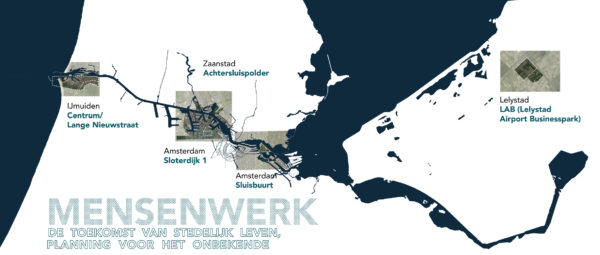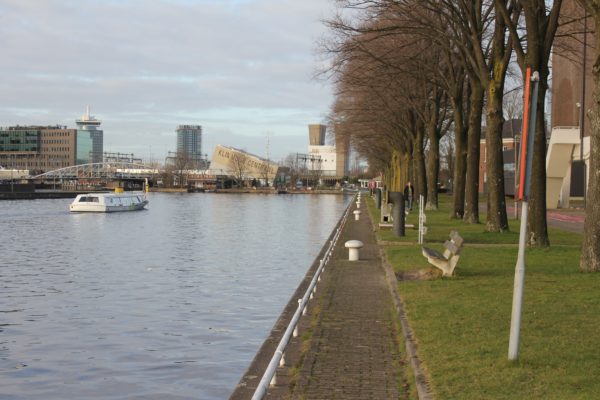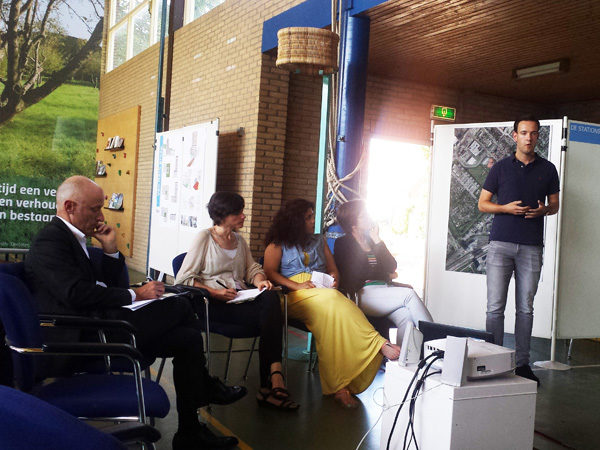
Our Research-by-Design ‘MensenWerk’ has reached a new phase. Check out our brand-new website http://www.mensenwerk.city to get a glance of the work in progress!

Our Research-by-Design ‘MensenWerk’ has reached a new phase. Check out our brand-new website http://www.mensenwerk.city to get a glance of the work in progress!

In 2018, the Dutch ministry of Defense is leaving the Marineterrein (Navy Yard) in Amsterdam. This means that 13 hectares of land will be released in the heart of the city. The idea of the stakeholder team (the Dutch government, municipality of Amsterdam and the city center board) is to develop the site into an international work and knowledge environment, i.e an Innovation District. It will become a place where top institutions and internationally oriented companies of different sizes can innovate, test and apply new solutions. In addition, it will also become an attractive place for locals and visitors. Cultural and social services, housing and various facilities for sporting and moving indoors and outdoors should contribute to meeting and interacting.
The current vision only indicates the direction of development and is not a blueprint. This allows for the future development to remain flexible and to adapt to the rapidly changing conditions required by innovative environments.
Together with the Amsterdam’s department of Planning and Sustainability, the Atelier Rijksbouwmeester and SPcitI have been collaborating from September 2016 to February 2017 to prepare a part of this step-by-step process, leading to the first basic spatial principles. The ‘Principebesluit Marineterrein’ of the planning department was approved by the city council of Amsterdam on July 18th. The next phase of the project was kicked-off the following day during ‘the making of the Marineterrein’.

On July 13th, SPCitI was invited to participate in the Interactive Learning Session on WASH and Urban Development & Design for WASH experts organized by the WASH Alliance International (WAI) in Amsterdam. The WAI is an international organization working towards granting universal and sustainable access to water and sanitation around the world. Through presentations and an active Q&A session, experts from different backgrounds were invited to exchange experiences and learn about innovative approaches, design solutions and techniques in the area of drinking water and sanitation. Invited participants included experts from Wereld Waternet, RUAF and WASTE.
SPCitI’s contribution, presented by Miranda, focused on the question ‘What type of infrastructure network model is suitable, taking into account the reality of urbanization & urban residents in cities in development?’. Miranda emphasized the importance of learning from the (physical, social and economic) context of the site, the impact of local uses, user experience and the challenges that come with urban diversity and the diversity in demand. SPcitI deals with this through a site-specific, multi-stakeholder participatory design process, on which Miranda elaborated by showing two examples of SPCitI projects in Brasil and Monrovia.

Last week, Wednesday July 5th, SPCitI, represented by Bernardina Borra, was invited by the Podium voor Architectuur to contribute to the panel discussion of the closing meeting of its program “(T)huis voor spoedzoekers” in Hoofdorp.
The program tackled the issue of emergency housing and how to transform this challenge into an opportunity for integration and reflection on new housing development practices.
Two teams made of Dutch and young Syrian designers presented the results of their design research projects which proposed solutions to vulnerable groups in urgent need of housing. The two proposals addressed the issues of use of public spaces, availability and accessibility of public amenities as well as community building and the integration of the new residents into the existing urban fabric and networks at different scales.
In addition to SPCitI, the panel included researchers and speakers from the housing corporation Ymere and the municipality of Haarlemmermeer. The discussion explored the limits of the definition of a “spoedzoeker” as well as the policies and processes that would allow for an active involvement of the target group in the development and the design of both the program and the space. The participants also raised the questions of affordability and sustainability and how they remain critical for the success of any development proposal.